Don’t spend your winter holed up inside. Get outdoors using these 21 ways to feel vital in the cold weather and stay warm outside in winter!
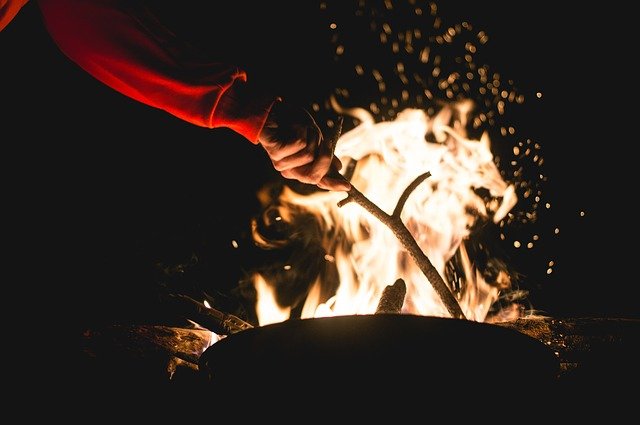
Image by Free-Photos from Pixabay
Winter is coming. That means it’s time to get ready for colder weather. But that doesn’t mean you have to hole up indoors for months on end.
Instead, embrace the cold by intentionally acclimating to cooler conditions early on, dressing appropriately, and making a few small social adjustments to stay warm outside in winter, all season long.
Here’s how!
Acclimate in Order to Stay Warm Outside in Winter
We all have temperature receptors on our skin which send signals to our brain about the conditions we encounter. In some of us, these receptors might be more sensitive to cold than others. This sensitivity could be genetic or just the result of spending most of our time in climate-controlled conditions.
Thankfully, just like lifting weights makes your muscles stronger, intentionally exposing yourself to cool conditions can strengthen your temperature receptors and make you more cold-hardy. Let’s look at a few simple ways to give your receptors a good workout:
Tip #1: Harden Yourself Off on Purpose
Gardeners expose indoor raised plants to outdoor conditions in short spurts to harden them off before transplanting them into garden beds. You can use this same basic technique to prepare yourself for the cold.
You May Also Enjoy:
“Growing Mâche: The Little Lettuce That Lasts All Winter”
Just step outside for a few minutes at a time without putting on a coat. Feel the reactions your body has to cold. What part of your body feels cold first? Is it your hands, face, fingers, toes, or something else? How uncomfortable does the cold feel? Is it an acute discomfort or do you find it more tolerable than you thought?
If you are like me, you might be surprised to find that feeling cold isn’t necessarily a painful experience. In fact, when you pay attention to how well your body adjusts to those cold signals, it’s life-affirming to know that your physical survival systems are in good functioning order.
Tip #2: Lower the Thermostat
Try lowering the temperature on your thermostat a degree or two every few days to see how low you can comfortably go. Think of it like thermostat limbo!
If you start to feel chilled, move around more. Jog in place. Do a few squats. Stretch. Any little bit of exercise you do will warm you up. If a burst of activity doesn’t make you feel comfortable again, then it might be time to turn back up the thermostat or put on a sweater.
How Low Is Too Low?
Keep in mind that experts say homes should be kept at 65-68℉. Personally, our thermostat is set to 58℉ during our waking hours. When we have guests, though, we raise the temperatures.
Tip #3: Sleep With the Window Open
Another easy way to acclimate to colder temperatures so you can stay warm outside in winter is to sleep with the window open. When cooler nights begin, we upgrade to our winter bedding. Then we turn off the heat at night and open the bedroom window.
It’s really a sumptuous feeling to be toasty warm in the covers while having your head exposed to all that cool, fresh air. It also keeps carbon dioxide levels lower and often reduces humidity in your bedroom.
Tip #4: Spend a Night Outside
If you’re up for a real adventure, do what Marjory did and spend a cold night camping outside with nothing but the clothes on your body. This is certainly not for everyone. Yet, when done as an intentional meditation on the comforts we take for granted, this can be a complete reset for the way you experience sensations like being cold.
You May Also Enjoy: “Surviving A Cold Night With Nothing But The Clothes On Our Backs”
Dress Appropriately to Stay Warm Outside in Winter
Now that we’ve covered ways to pre-acclimate to be more comfortable in cold conditions, let’s get into cold-weather attire that can help you stay warm outside in winter.
Tip #5: Layer Lightly
If you know anything about greenhouse/hoop house gardening, then this tip will make perfect sense. Rather than just putting on a heavy jacket, layer up lightly. Perhaps start with an undershirt, followed by a long-sleeved T-shirt. Then, put on a sweater or pullover. Add a vest, then top this off with a jacket.
Just like a doubled-up plastic sheeting or twin wall polycarbonate panels insulate better than single ply coverings for garden season extension, multiple light layers of clothing add up to much more warmth than just a heavy coat.
That’s because heat gets trapped between each layer. Those lighter layers also do a better job at whisking away and releasing moisture than thicker layers do.
You May Also Enjoy:
“DIY Hoop House: The Easy Greenhouse Alternative”
“Top 5 Things to Consider When Building (or Buying) a Greenhouse”
“Mad Scientist Works For Greenhouse Heating Independence Down To -25F”
So, if you get too warm and begin to sweat, moisture evaporates quickly to prevent you from becoming wet and cold. You can also easily remove extra layers as you warm up to limit sweating.
Don’t forget to layer up your hands and feet, too. Wear gloves with multiple insulative layers built in or use liners under your single-ply gloves. Double up on the socks and wear insulated boots with liners.
Just make sure that your layers are light and loose. You don’t want to restrict blood flow to your extremities since that can make you feel cold, too.
Tip #6: Be a Hot Head!

Image by Free-Photos from Pixabay
Generally, hot heads aren’t cool. But when it comes to staying warm outside in winter, retaining as much heat in your head as possible is a must.
For the record, those claims that you lose most of your body heat through your head are a little misrepresented. Scientists say that your head and neck is about 7% of your skin surface area and so you lose about 7% of your body heat through that area. In other words, your head sheds heat at the same rate as every other part of your body.
Of course, if only your head and neck are exposed to cold, then you’ll definitely lose more heat from your head than your fully clothed body parts. So, in that case, the adage is in fact true.
Luckily, it’s easy to avoid that problem by wearing a scarf and hat.
Tip #7: Try Wrapping Your Kidneys
An ancient way to dress warm in the winter is to wrap your kidneys. This idea seems too simple on the surface to work. But if you follow the logic, it makes perfect sense.
You May Also Enjoy:
“The Kidney Wrap: Prepare Your Body For Winter”
When we get chilled, our bodies divert extra blood flow to our core area to protect our vital organs from freezing. As a result, two things happen. First, you feel a significant increase in pressure in your core due to the extra blood flow. Second, the parts of your body furthest from your internal organs lose blood flow and get cold faster.
Our luxurious, handcrafted Ultimate Kidney Wraps get rave reviews—but our supply is limited, so hurry to get yours! Click Here to Buy Your Heirloom-Quality Kidney Wrap.
Compression kidney wraps simulate your bodies response by adding insulation around your internal organs and increasing pressure in your core area so additional blood flow is not required to keep your organs warm. That means you get to keep the blood flow going strong from the top of your head, to the tips of your fingers and toes. That makes you feel warmer all over.
Food and Beverages That Help You Stay Warm Outside in Winter
Now that you are acclimated and well-dressed for winter, let’s dish the dirt on cold weather food and beverage tips.
Tip #8: Skip the Alcohol
I’ve got to bust another myth. Drinking alcohol does not help make you warm in the cold. It temporarily causes the surface of your skin feel warmer while working as a depressant lowering your overall temperature.
So, skip the alcohol when spending extended time outdoors in cold conditions to stay warmer longer. However, once you come in from the cold, it’s absolutely true that alcohol can take the chill off faster as you warm back up. A strategic glass of whisky or organic wine can help you recover quickly once back in the safety of a warm shelter.
Tip #9: Hot Beverages Are a Mixed Bag

Image by congerdesign from Pixabay
In terms of body temperature, drinking warm beverages won’t make much difference. The quantity of liquid consumed and the rate we drink it aren’t sufficient to have an impact. Yet they can offer comfort in certain circumstances.
Pros
What a warm beverage can do is temporarily warm your hands as you hold it. The steam from the liquid can also warm your cold-sensitive and exposed nose and mouth areas. A warm beverage on a cold day can also improve your attitude toward being out in the cold and that can make you feel warmer, too.
These benefits make it a great tool for helping you warm up quickly when you come in from the cold.
Cons
Unfortunately, all that fluid paired with the extra pressure on your internal organs (as we covered under kidney wraps) can lead to an urgent need to strip down to pee. This phenomena is called cold diuresis, and for some people it can lead to excess peeing in cold weather. That, in turn, can potentially expose you to cold air if you have to pee outside or in an unheated bathroom.
Additionally, sugar-loaded hot drinks may cause spikes in your blood sugar. That can potentially elevate your body temperature. Yet, we all know how bad sugar can be for our bodies. So, why not try the next tip instead?
Tip #10: Say ‘Yes’ to Spicy Soup
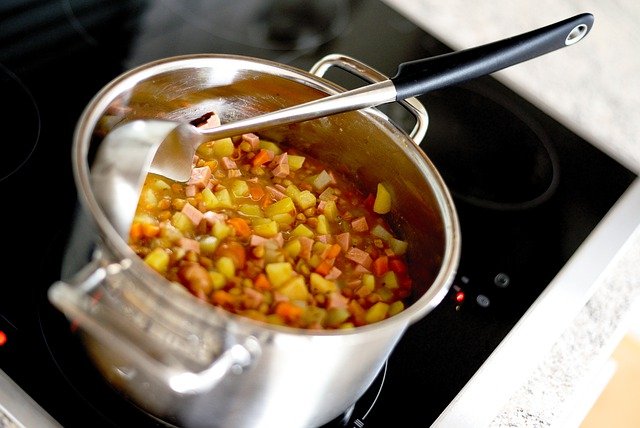
Image by congerdesign from Pixabay
Hot soup has the same temporary warming benefits as a hot beverage. However, if you choose a healthy soup loaded with vegetables and spices, you also get all those vitamins and phytonutrients.
Plus, if you season that soup with chili peppers that contain capsaicin, such as a little powdered cayenne or some gochu, then you may also get a heat generating metabolic boost. Research shows it’s not just your mouth that feels hot after eating spicy peppers, your entire body might also shift into metabolic high gear and generate a little more heat.
At high doses, capsaicin may even have benefits for treating hypothermia. But please don’t try to eat those kind of therapeutic levels at home!
You May Also Enjoy:
“9 Essential Tips for Storing and Using Beans and Rice”
One spice to possibly exclude from outdoor enjoyed winter soups is cinnamon. Researchers have shown that cinnamon can lower the body temperatures in pigs. We don’t know for certain if it has the same results in humans. But theoretically, its cooling abilities might explain why cinnamon is so universally loved for cooking in hot regions around the world.
One final benefit of slurping some soup to stay warm is that you can bring your own in a thermos. Then you can drink your meal without having to take off your gloves to handle delicate utensils.
Additionally, when you imbibe liquids with food that requires digestion, it takes longer for the liquid to be absorbed and processed through the kidneys. That may make it possible to postpone the cold-induced urge to pee until later.
Stay Warm at Social Events
Another way to stay warm outdoors longer is to treat yourself to some outdoor amenities designed to increase your comfort.
Tip #11: Heat Stuff
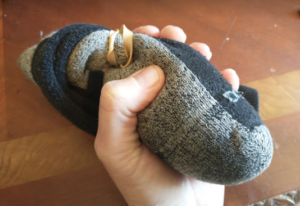
I add dried rosemary to my sock rice warmers.
I grew up listening to my mom tell stories of my grandmother warming bricks to put at the foot of their bed for cold nights. I could just imagine what a treat that must have been in a home without central heat.
Well, that concept is also a great way to warm up outdoors. You don’t have to heat a brick. It could be stones or hot water bottles. You can also stuff some extra socks with rice, flaxseeds, and herbs, and microwave them as “no-sew” handwarmers. Or go big and do the same in a pillowcase to create a portable bun warmer.
This isn’t going to get you hours of warmth. But if you use them while the outdoor fire pit is getting started or until you get warmed up doing outdoor exercise, they make a great stopgap.
Tip #12: Bring Blankets
Plan to bring your own blankets to outdoor social events. When you BYOB, you can super-power your outdoor blankets by attaching a metalized polyethylene or polyester emergency blanket to the inside of your personal throw. Those materials reflect your own body heat back at you while the outer blanket adds bonus insulation. Some emergency blankets are even reusable long-term.
Tip #13: Light a Fire (or Two)
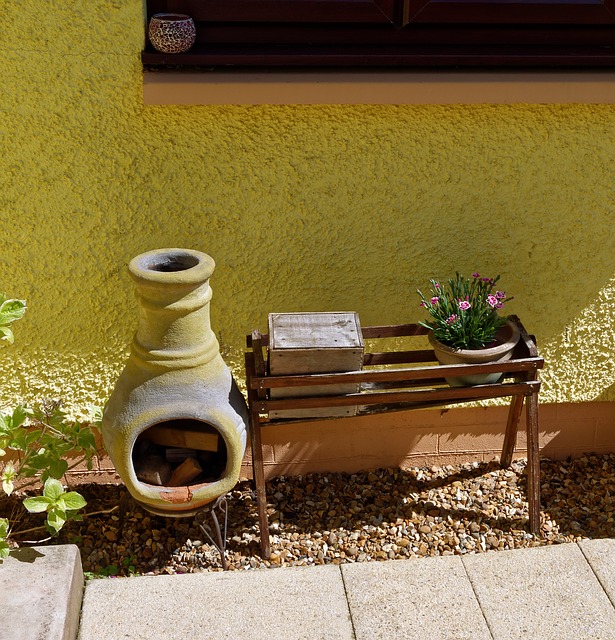
Image by Kevin Phillips from Pixabay
Bonfires have always been a great way to warm up. But you don’t have to make one great big fire that requires people to huddle close to each other to warm up. You can opt for multiple smaller fire pits or chimneas scattered around a larger area.
Inexpensive portable hibachi grills or rocket stoves can also be employed to give guests personal-sized campfires to huddle around. These last two devices are small enough that you can even BYO if you attend outdoor, socially distanced events this winter.
Tip #14: Turn Your Barbecue Propane Tank Into a Heater
There’s been a run on attractive outdoor propane heaters this year. So, lots of retailers are out of them. Plus, they can be super expensive and not so portable. But you can still buy tank attachment heaters for about $50-$100 that can convert your barbecue propane tank into a portable outdoor heater.
Tip #15: Turn Your Propane Tank Into a Wood-fired Stove
Outdoor wood-fired stoves are also hard to find these days due to high demand. But if you have some metalworking skills and some stovepipe, you can repurpose a propane tank into a wood-burning stove to use in your exterior social spaces.
People use these in tiny houses and garages. So as long as they are, in fact, firesafe, you can also put them to good use on a porch or in walled outdoor patios.
Tip #16: Make a Fire Reflector Pod
Now, I have to admit that I haven’t tried this myself. But it looks like a pretty smart idea.
Basically, you get those heat reflectors like you use in car windows (Reflectix is a popular brand) to make a reflective pod around your camping chair. Then, when you sit inside the pod, your body heat and the heat from the fire get trapped inside the pod and reflected back at you.
Tip #17: Use Microclimates
To borrow another idea from good gardening practices, holding your social events in places where you have warmth-capturing microclimates can make being outdoors in cold weather much more comfortable.
Your house may make a perfect wind block. The driveway may be a great heat sink to absorb and radiate heat back to your guests. So, you can use these features of your home that you already have.
You May Also Enjoy:
“21 Clever Ways to Extend the Growing Season”
Or you can plan new outdoors spaces for socializing that intentionally harness the power of microclimates. Keys to creating microclimates are blocking icy winds, capturing full sun, and adding heat sinks such as stone or water features.
Tip #18: Stay Active
Sitting around the fire is fun in moderately cold weather. When it gets really cold, more active social events might make more sense.
Walking, running, and hiking are great choices. Snowshoe excursions and cross-country skiing are perfect for snowy conditions. Of course, normal winter stuff like ice skating, slope skiing, snowboarding, and ice climbing are all fun cold-weather activities, as well.
Big Changes That Can Help You Warm Up Outside
If you’re ready for some big lifestyle changes to enhance your cold-weather enjoyment prospects, here are some options to consider.
Tip #19: Create an Exercise Course
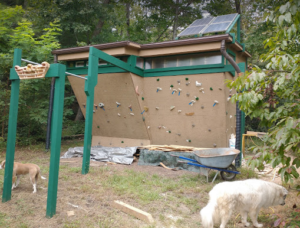
This bouldering wall/storage building is part of our home exercise circuit.
You don’t need to go to a gym to get exercise. You can create your own calisthenics and aerobic-activity course in your backyard.
Add a chin-up bar. Create a bouldering wall. Install a balance beam. Designate stations for certain activities like jump rope, push-ups, sit-ups, etc. This doesn’t have to be fancy. But it’s more fun if you mark the space and make it like a circuit so you feel like you’re at the gym.
Tip #20: Hello, Hot Tub!
We have a wood-fired hot tub that we practically live in most nights from October to April. We soak first and get all toasty and warm. Then we cool off in outdoor Adirondack chairs under the stars. Repeat that a few times and all the worries of the day melt away.
Tip #21: Sauna Time
Like a hot tub, a home sauna is another great way to cycle between hot and cold for peak health and winter enjoyment. The sauna itself is enclose, so you may want to reserve it for personal use. But once you get toasty warm inside the sauna, you can sit outside even in below-freezing temperatures for quite a while until you cool down. Then you can repeat the process of warming back up in the sauna.
Cold-Weather Risks
Now you know 21 possible ways of warming up outdoors all season long. But it’s important to note that people with severe or chronic illness, children, and the elderly may suffer severe consequences from exposure to cold temperatures—even in short durations. As such, please take care to choose and use only the tips that are appropriate to your health situation and for those in your care.
Also, keep in mind that your body does a great job of telling you when it’s time to warm up. Icy cold extremities and spine chills are your early warning system that you need to get warmer. Make sure you heed those warning alerts and don’t overstay your welcome outside in the cold.
How Do You Stay Warm?
Now it’s your turn! How do you stay warm outside in winter? We’d love to hear your ideas in the comments section below.
___________
This is an updated version of an article that was originally published on November 20, 2020. The author may not currently be available to respond to comments, however we encourage our Community members to chime in to share their experiences and answer questions!
The Grow Network is a participant in the Amazon Services LLC Associates Program, an affiliate program designed to provide a means for our team to earn fees for recommending our favorite products! We may earn a small commission, at no additional cost to you, should you purchase an item after clicking one of our links. Thanks for supporting TGN!

Tasha Greer is a regular contributor to The Grow Network and has cowritten several e-books with Marjory Wildcraft. The author of “Grow Your Own Spices” (December 2020), she also blogs for MorningChores.com and Mother Earth News. For more tips on homesteading and herb and spice gardening, follow Tasha at Simplestead.com.
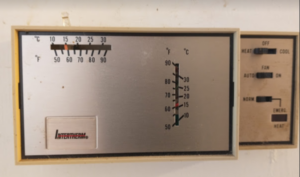
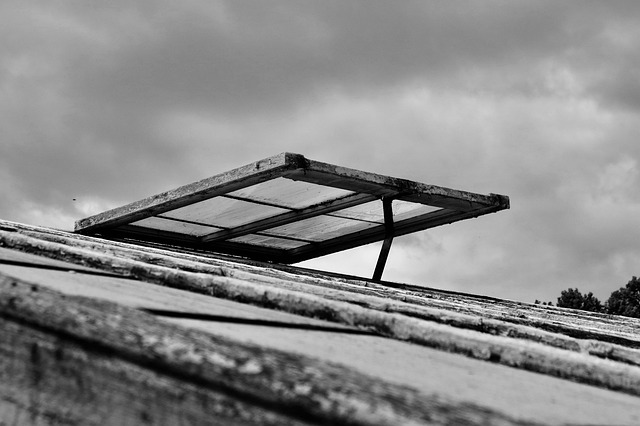
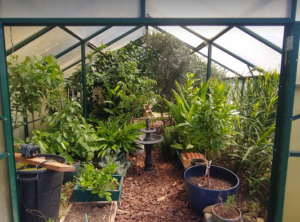
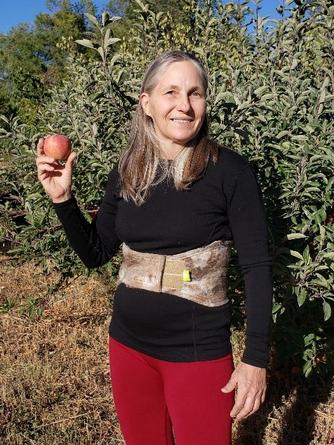
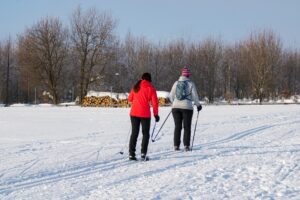








COMMENTS(3)
This is a way to keep your feet warm.
Sprinkle cayenne pepper inside your socks, when your feet start to sweat it will activate the pepper. GO sparingly it works.
Also put plastic shopping bags over your socks inside your boots. This will keep your feet from wicking and getting cold.
I have 50 plus years working in the construction industry and this is how to keep your feet warm
I love these ideas! I never thought about the plastic bags in the boots. What a clever solution. Thank you for sharing!
Interesting ideas. I have always layered when I take care of the goats on the mornings. If I am feeing cold I will chew on some dried ginger, as I swallow the the juice the warmth spreads through out my body.